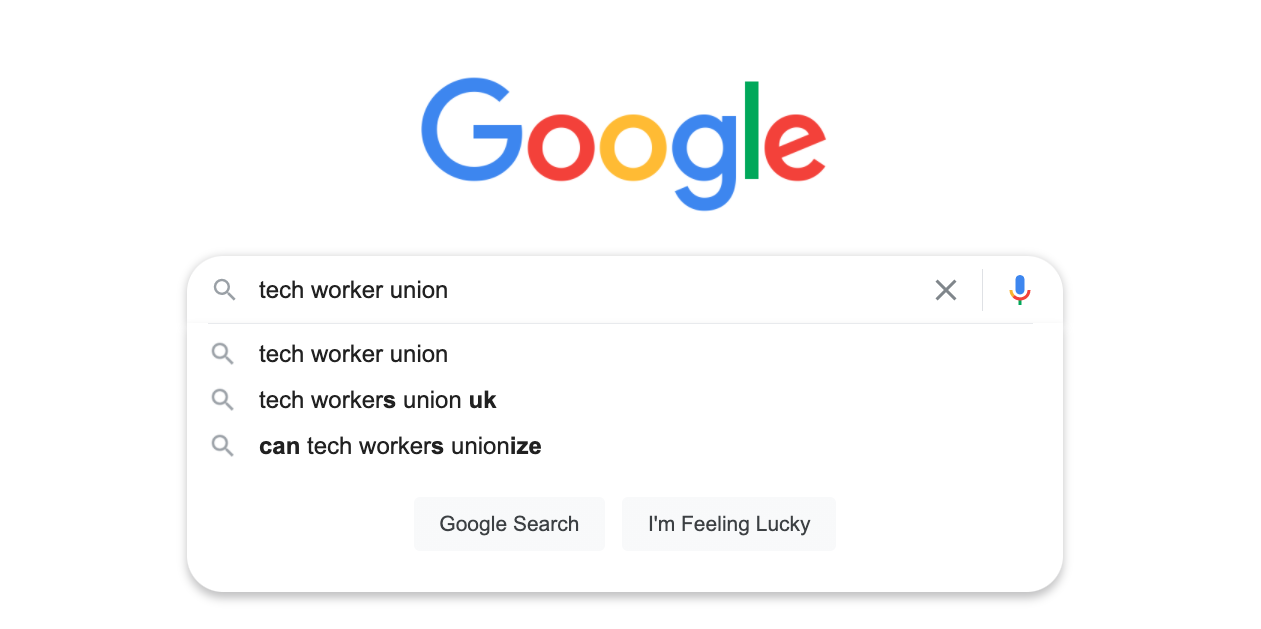Collective action among white-collar workers in the tech industry was once rare. Now it’s something that happens nearly every week. For over a year, Collective Action in Tech has been documenting the tech workers movement, and—based on our archive—we’ve seen the number of actions triple year-over-year from 2017 through to 2019.
During this period, tech workers have deployed a variety of organizing strategies. But one of the most common tactics, particularly among white-collar tech workers at well-known firms, has been to try to generate bad publicity about their company in order to pressure management to accede to their demands. Often, these demands are published in open letters, which are then relayed to journalists to report on.
This tactic has had some success. In certain cases, it has played a role in helping collective action campaigns win, such as the one led by Google employees to cancel a company contract with the Pentagon’s algorithmic warfare initiative, Project Maven. Moreover, the relationship of tech worker organizers with journalists has never been unidirectional. Organizers have also learned about what their own companies are doing through media coverage, which often serves a catalyst for further organizing. For example, Amazon employees first learned about their company’s partnerships with Big Oil after a viral post on Gizmodo by Brian Merchant.
This tactic has also been used by tech workers to start industry-wide conversations about injustices and inequities in the industry, such as when Microsoft employees exposed how the industry was abetting heinous immigration policies when demanding the cancellation of their company’s contract with ICE. Equally important has been how these initiatives have helped ignite conversations among employees within workplaces, making the possibility of collective action in tech much greater today than ever before.
Even so, the use of open letters and a media-centered approach has generally failed to help organizers extract concessions from management. This is largely because open letters do not involve disruptive actions that threaten the company’s bottom line. Bad publicity can be ignored or countered, as many tech companies have learned to do.
Further, the tactic carries serious risks. It typically relies on making certain employees available to the media as spokespeople—which in turn makes those individuals particularly exposed to reprisals from management. Given the fact that collective action campaigns in tech are largely led by women and people of color, this has the effect of making already vulnerable people even more vulnerable. Over the past year, we’ve seen a wave of retaliation against white-collar tech worker organizers, with multiple terminations. We’ve also seen companies like Google hire union-busting consulting firms. As management commits to a more repressive response and openly cracks down on organizers, it becomes even more difficult to shame them through bad publicity.
A final problem is that bad publicity is becoming harder to generate because the novelty of collective action by white-collar tech workers is wearing off. While mainstream media has devoted substantial coverage to certain collective action campaigns, particularly those at Google, Amazon and Facebook, the story of the tech worker movement is no longer new. An open letter doesn’t make as much of an impact as it used to.
So where does that leave us? Thanks to the courage and commitment of organizers over the past few years, there is a much higher level of consciousness among white-collar workers about the injustices of the industry, the importance of the worker identity, and the power of collective action. But the tech industry has also become more powerful. Tech companies have taken advantage of the pandemic to fast-track the digital transformation of all aspects of life and are enjoying record-breaking valuations. For tech workers, the task of organizing the industry has only become more urgent. For the tech worker movement to reach its next phase, we must develop new tactics and find ways to adapt to the new terrain.
In this next chapter of Collective Action in Tech, we hope to bring together worker voices to collectively chart a path forward. Through experimentation and open-ended dialogue, we want to create a space for us to reflect on the tech worker movement’s past and invent its future.
We invite you to join us and help shape what the next chapter for collective action in tech looks like.
The team behind Collective Action in Tech
-
The Editorshttps://collectiveaction.tech/author/collectiveactionintech/
-
The Editorshttps://collectiveaction.tech/author/collectiveactionintech/
-
The Editorshttps://collectiveaction.tech/author/collectiveactionintech/
-
The Editorshttps://collectiveaction.tech/author/collectiveactionintech/
